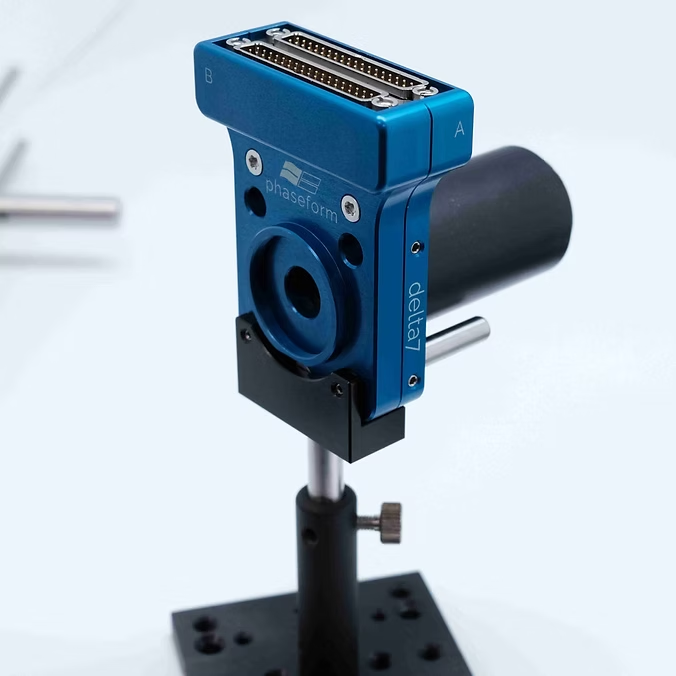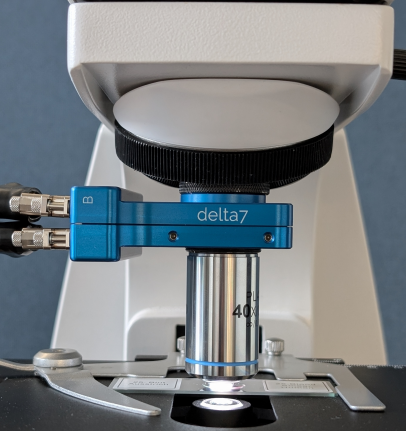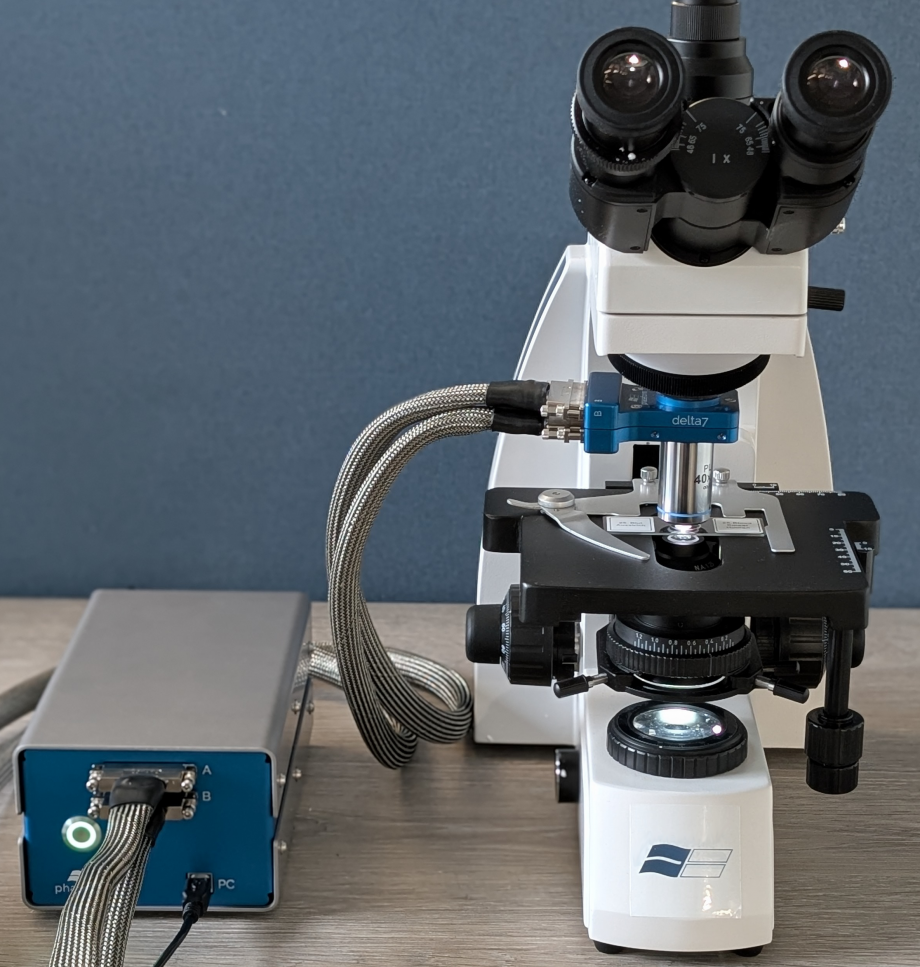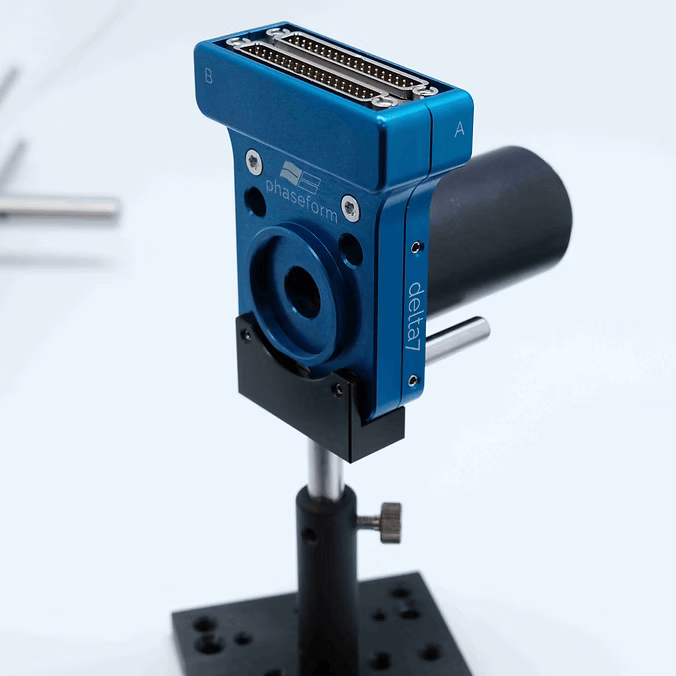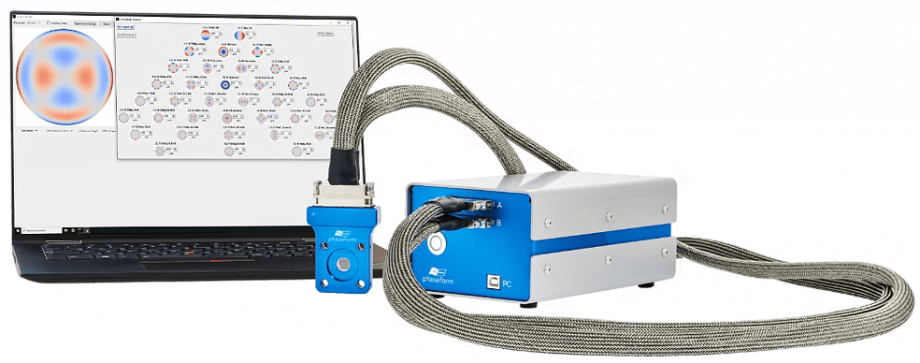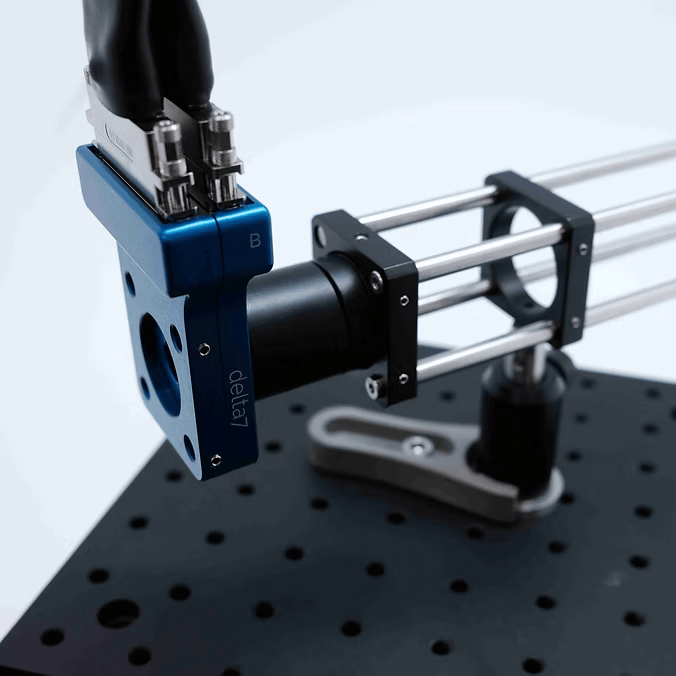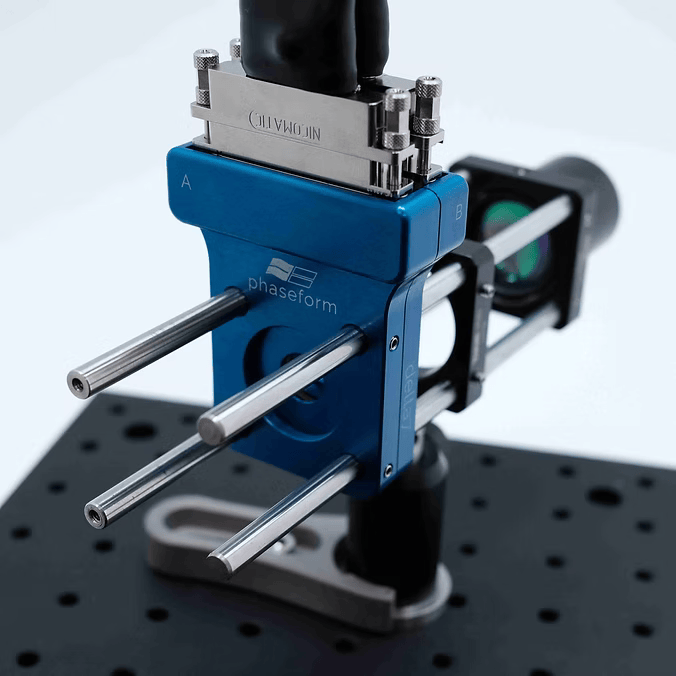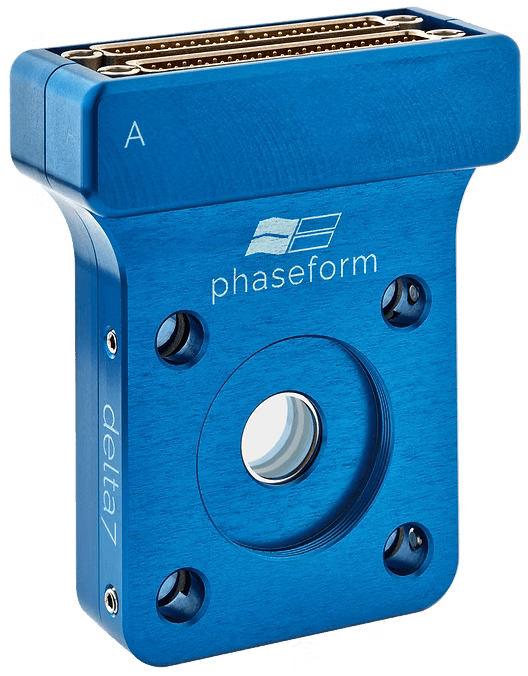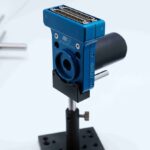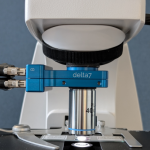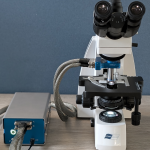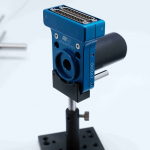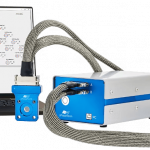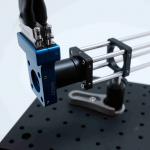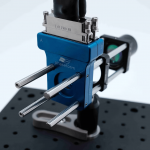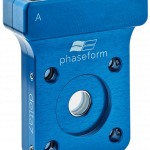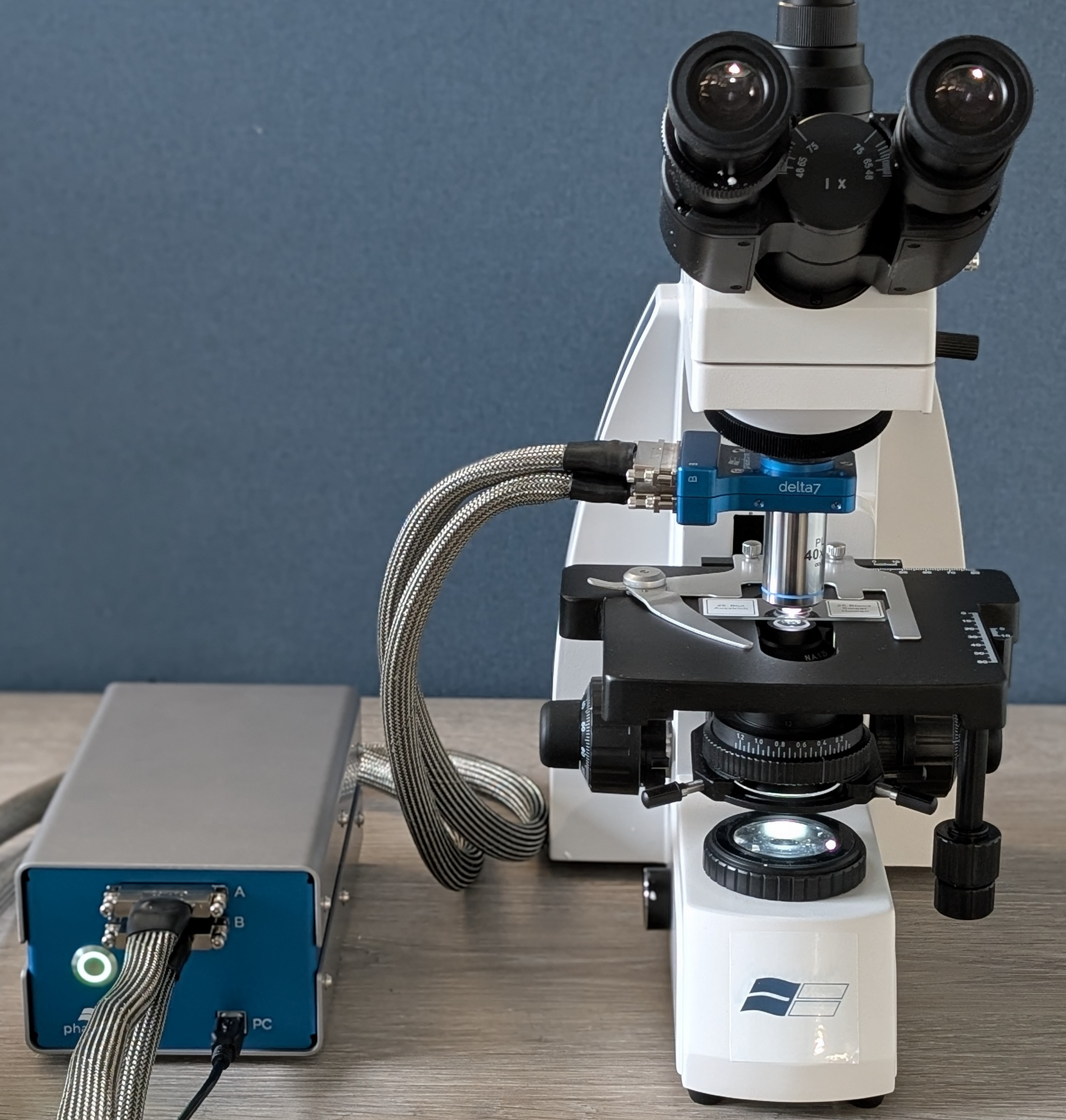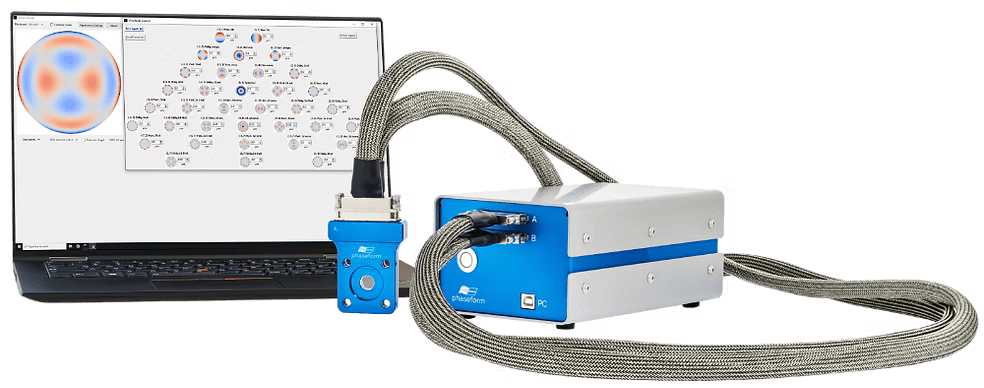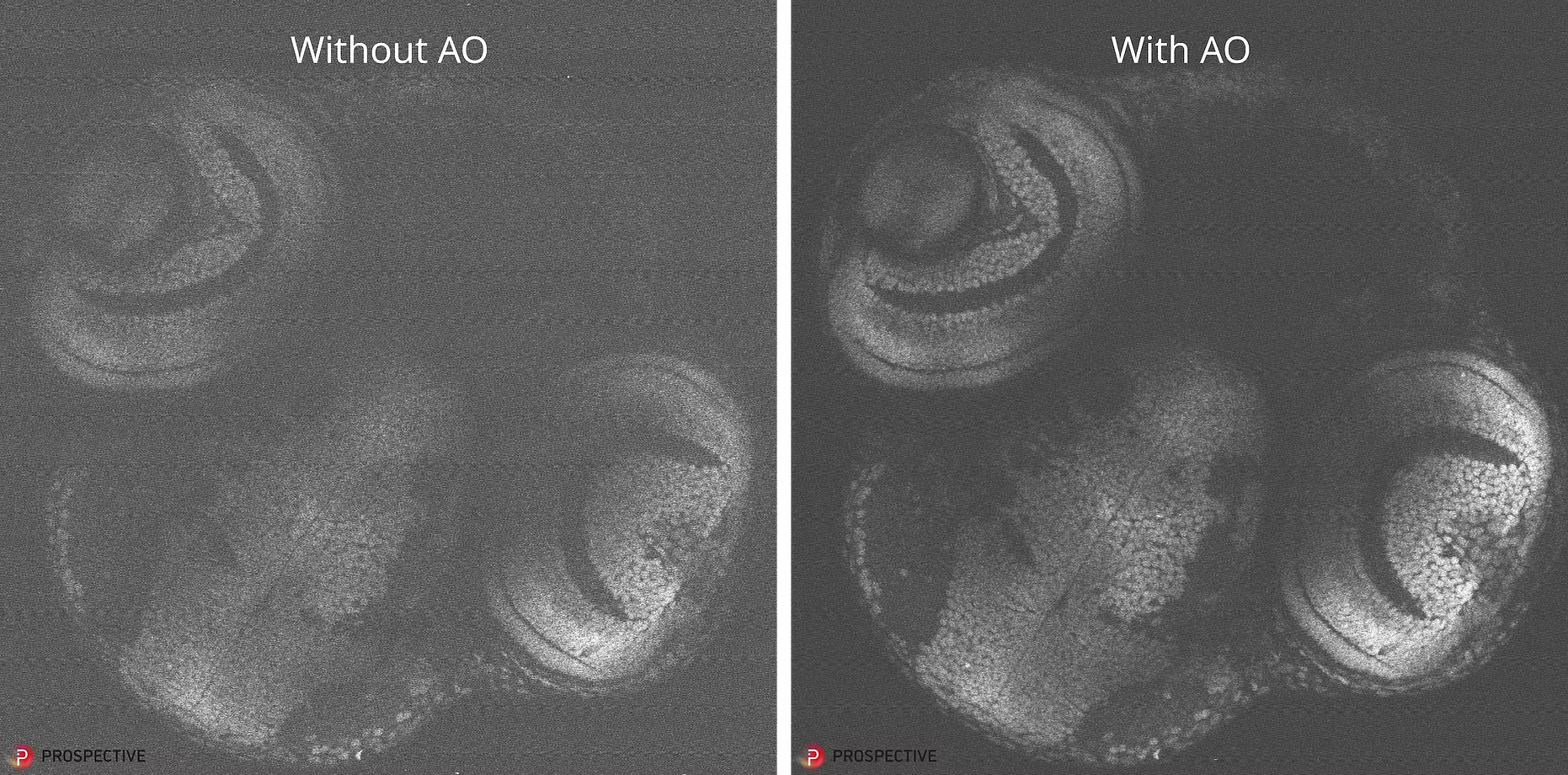Delta 7 – Deformable Phase Plate for easy adaptive optics
The Delta 7 is the latest breakthrough in adaptive optics technology. Manufactured by Phaseform, the Deformable Phase Plate (DPP) is a new kind of fully transmissive, miniaturized wavefront modulator. It delivers dynamic, real-time aberration correction and can be placed directly into an optical beam path, much like a regular lens. The DPP consists of a fluid-filled chamber enclosed by a flexible membrane that is shaped by electrostatic forces. These forces are produced by a two-dimensional array of transparent electrodes integrated within the optical aperture of the DPP. The advanced optofluidic design of the DPP ensures gravity-independent operation, enabling high-quality wavefront modulation regardless of orientation.

Setting up an adaptive optics set-up using delta 7 has never been simpler. Contrary to conventional deformable mirrors, no relay lenses are needed and Delta 7 can be placed exactly where the aberrations need to be corrected ! For example , as we show below, in microscopy applications, Delta 7 can be directly inserted at the back pupil of the microscope objective !



